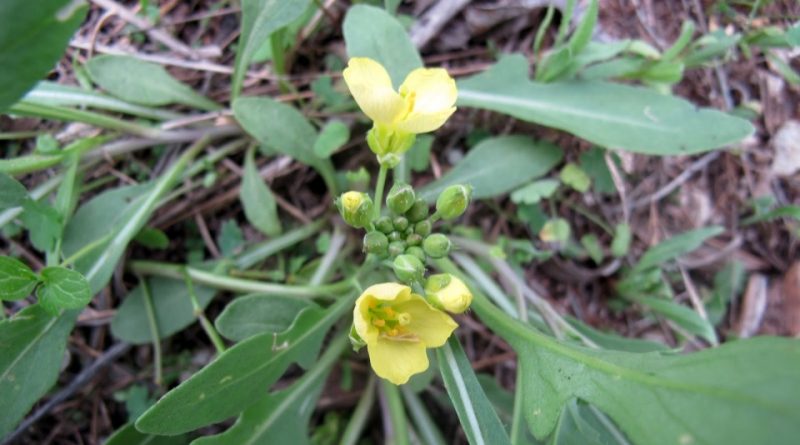Diplotaxis tenuifolia
Diplotaxis tenuifolia
The perennial wall-rocket (Diplotaxis tenuifolia (L.) DC.) Is a perennial herbaceous species of the Brassicaceae family.
Systematics –
From the systematic point of view it belongs to the Eukaryota Domain, United Plantae, Magnoliophyta Division, Magnoliopsida Class, Capparales Order, Brassicaceae Family and therefore to the Genus Diplotaxis and to the D. tenuifolia Species.
The terms are synonymous: Sisymbrium tenuifolium L. and Eruca tenuifolia (L.) Moench.
Etymology –
The term Diplotaxis comes from the Greek double diplòos and τάξις tàxis order, arrangement: for the arrangement of the seeds in double series in the siliqua.
The specific epithet tenuifolia comes from tenuis exile, thin and from folium lamina, leaf, lamella: with thin leaves (in comparison to other congener species).
Geographical Distribution and Habitat –
The wall-rocket is a Mediterranean-sudeuropean species present in all regions of Italy. Its habitat is represented by ruderal vegetation, along roads, in landfills, on cliffs and walls, in abandoned fields, more rarely in cultivated areas, on primitive arid summer soils and prefers calcareous soils; it is present from sea level to the lower montane belt.
Description –
The Diplotaxis tenuifolia is a perennial herbaceous species that has pinnate, fleshy, more or less deeply incised-toothed leaves, with a spicy flavor; the flowers are bright yellow, with 4 petals, 4 sepals and six stamens.
The flowering period is between May and October and can even arrive in winter in the warmer areas of the south.
The fruits are linear siliques, 22-40 x 1.5-2 mm, carried by pedicels of 10-30 mm, with valves, flat, without evident ribs, which suddenly free themselves from the bottom, expelling (elastic dehiscence) i numerous and small seeds, of 1-1.3 x 0.7-0.9 mm, ovoids or ellipsoids, arranged in two rows per niche.
Cultivation –
The perennial wall-rocket is a plant that is grown starting very easily from seed propagation, which naturally occurs spontaneously. It prefers sandy, calcareous and sunny soils. To have a continuous harvest you need to water and trim the plants, so as to prevent them from blooming so that the leaves are tender and very aromatic.
Compared to the common rocket (Eruca sativa) it can be cultivated with some care throughout the year, in sandy soil and in a sunny position up to 1000 m s.l.m ..
Uses and Traditions –
The perennial wall-rocket is used for its leaves, with a taste similar to those of rocket, in salads, but also to give flavor to omelettes, cheeses, pizzas and meat dishes.
For the use, the most tender leaves should be collected and eaten fresh.
This plant also has diuretic, astringent, vitaminizing and expectorant therapeutic properties.
Preparation Mode –
To use this plant in the kitchen the tender leaves of the plants that have not yet gone into flower must be collected; the leaves can be used raw to flavor salads, pasta and fillings, in the same way as using rocket.
Guido Bissanti
Sources
– Acta Plantarum – Flora of the Italian Regions.
– Wikipedia, the free encyclopedia.
– Treben M., 2000. Health from the Pharmacy of the Lord, Advice and experiences with medicinal herbs, Ennsthaler Editore
– Pignatti S., 1982. Flora of Italy, Edagricole, Bologna.
– Conti F., Abbate G., Alessandrini A., Blasi C. (edited by), 2005. An annotated checklist of the Italian vascular flora, Palombi Editore.
Attention: Pharmaceutical applications and food uses are indicated for informational purposes only, do not in any way represent a medical prescription; therefore no responsibility is assumed for their use for curative, aesthetic or food purposes.


